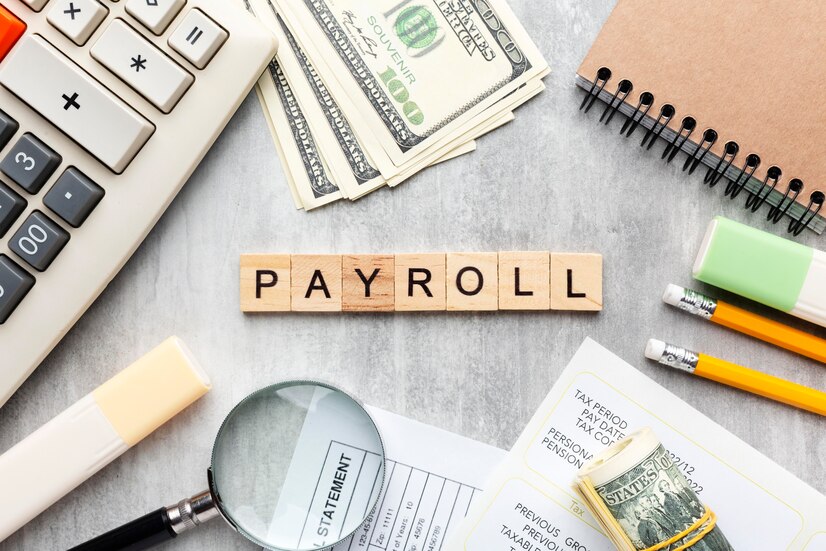It’s time to unleash the power of a powerful software application that automates the complex tasks associated with managing employees. A payroll management system efficiently handles all HR operations and ensures accurate solutions in real time.
From calculating wages to generating paychecks, the functions of payroll management are unmatchable. It offers a wide range of functions to streamline the payroll process of a business organization.
Businesses require real-time calculations of employee compensation, legal compliance, and integration with time-tracking systems. Therefore, the function of payroll management is to keep detailed records, providing operation and efficiency and employee satisfaction. Also, a self-service portal for employees reduces administrative burden by enhancing transparency in the work environment.
This blog will be a comprehensive guide to the critical functions of a payroll management system:
Critical Functions of Payroll Management
A well-structured payroll management system in Noida offers numerous benefits within an organization, ensuring that employees are paid accurately on time. Here are some critical functions of payroll management that highlight its importance in modern business scenarios:
“Generating paychecks with ease: functions of payroll management software simplifies the process of wages and deduction calculations.”
Keeping Track Records and Reporting of Payroll Management
Keeping track of accurate and accessible records is essential for both the company and its employees. Thus, record-keeping and reporting are some of the main functions of payroll management. The system maintains complete payroll transactions, including payment deduction, leaves and other adjustments.
These reports are crucial and can be used for various purposes, such as tax fixing, financial audits, and resolving disputes regarding employee compensation. This automated system maintains real-time records such as year-to-date earning, tax summaries, and deductions.
It provides valuable insight into work expenses and helps organizations make informed financial decisions.
Compliance with Legal Requirements
Adherence to legal regulations is a crucial part of maintaining business reputation and reliability for employees. Those functions of payroll management software involve compliance with regional and federal laws related to employee compensation taxes and labor laws.
Non-compliance with these regulations can result in huge frames and financial penalties for organizations. An efficient payroll system automatically applies the latest technology and regulations and updates itself to avoid penalties. Moreover, it generates reports of regulatory authorities to ensure the timely submission of necessary payroll taxes.
Calculation Accuracy
The HR department of an organization has to deal with regular salary calculations, hourly wages, overtime pay, bonuses, and other variable earnings on a daily basis. The primary function of payroll management software is to accurately calculate employee compensation, ensuring every employee receives the paychecks for their performance and works accordingly.
The system takes into account multiple factors, including employee contracts, time of work, and overtime hours, to produce precise payroll results. The system also calculates tax deductions, health insurance, retirement contributions, and other relevant compensations.
Integration with Other Systems
Keeping track of time and attendance is another crucial part of business management. Thus, a modern payroll management system links with time and attendance tracking tools for a real-time update.
Payroll systems can integrate with time-tracking software to calculate wages based on hourly work, overtime and leave taken. Synchronizing attendance management software in Noida with the function of payroll management can accurately calculate the time employees have worked.
Self-Service Portal for Employee
A self-service portal for employees is one crucial function of payroll . This empowers employees to access and manage their payroll information individually, thereby reducing the workload for both administrative and HR departments.
For instance, employees can view their current and past stubs, emergency contact information, tax status, and more, providing transparency and convenience. Employees can also make updates today for personal information, bank account details, and text deductions independently, without going through the HR department.
Conclusion
Payroll management system works as the backbone of employee compensation within an organization. It encompasses accurate compensation, legal compliance, and detailed record-keeping. Through automation and integration, the function of payroll reduces potential risks and minimizes the burden of administrative tasks in payroll functions. With CloveHRMS, an advanced HRMS software in Noida, businesses can seamlessly streamline payroll processes, ensuring precision and efficiency in managing employee compensation.
FAQs
- What are the main functions of the payroll management system?
The payroll management system automates the manual process involved in managing employee wage deductions and generating paychecks.
- Can payroll systems integrate with time and attendance tracking software?
Yes, the systems can integrate with other software, such as time and attendance tracking devices. These systems automatically transfer employees’ work hours and overtime and leave information, ensuring accurate payroll processing based on real-time attendance information.
- Which type of reports can a payroll system generate?
A system can generate various reports for an organization, including employee earnings, tax deductions, attendance, overtime, absence, and salary summaries.
- Does a payroll system ensure data security?
Yes, a payroll system ensures data security by implementing stringent security measures, such as encryption and access control. It also prevents unauthorized access, data breaches, and cyber threats, maintaining privacy concerns.







